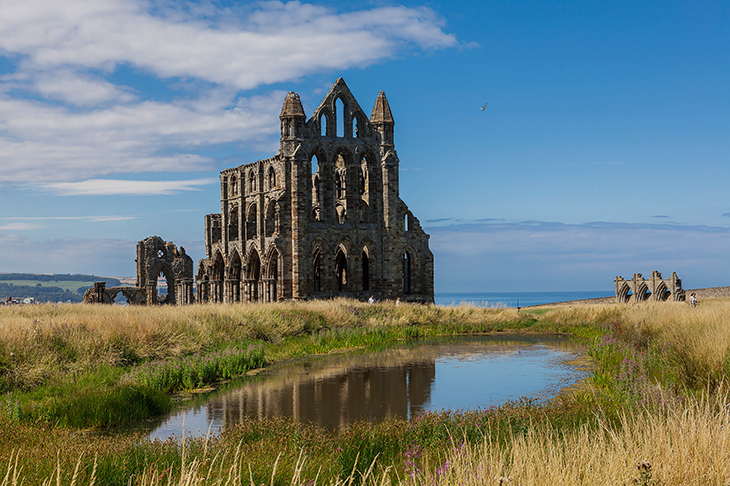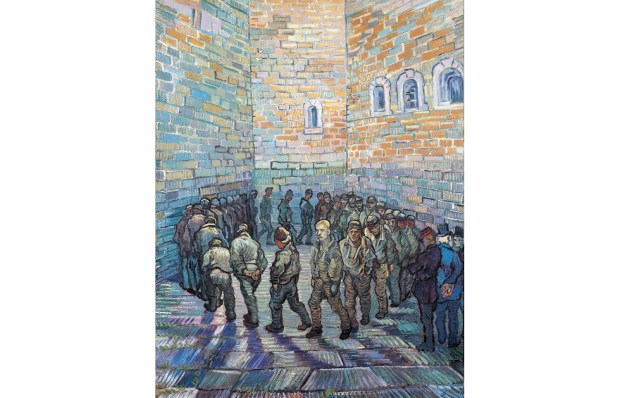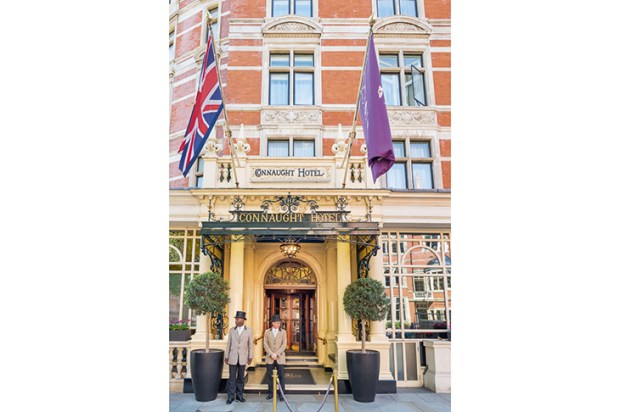The 199 steps up to the ruins of Whitby Abbey are a pilgrimage; they always have been. And any good pilgrimage takes effort. Count Dracula (also acquainted with the north Yorkshire town) cheated — he climbed the steps in the guise of a black hound. These days, with its new £1.6 million museum and visitor centre, our vampire friend would find a ground-floor café and gift shop. Knowing English Heritage, there is probably a bowl of water for dogs, which would have kept the Count happy.
Whitby is a surprise, with a history that puts it at the heart of Britain’s spiritual and literary life. It’s also a vibrant fishing port, somewhere you can pick up a Whitby smoky — smoked herrings — made in a backstreet smokehouse. And the local jet trade still flourishes. But with more than 150,000 visitors a year to the old abbey, its new museum will certainly have pulling power.
Everyone acknowledges that Whitby Abbey is magical. But that’s the easy part. How can it tell a story that includes saints, vampires and an early European controversy with uncanny echoes of Brexit?
To understand Whitby, we need to go back to the early 7th century, whose power struggles would have given Game of Thrones a run for its money. Into that turmoil came Hilda, born into the royal household, who by the age of 13 had seen her father killed by poisoning while in exile.
Hilda renounced all the royal trappings, became a nun and set up a monastery in Whitby. Like many Celtic monasteries, it became a centre for good works, education, singing and storytelling, and men and women worshipped together.
But there were ructions in the church — not least about the date of Easter. While one faction of Christians was still in Lent, another had celebrated Easter. And that’s where Whitby and Hilda came in.
The Synod of Whitby, held in 664 at her monastery, was set the task of deciding who would come out on the top — the Irish/native-influenced Celts or the Romans. In the end, the Romans, with their centralising tendencies, won and the great Celtic tradition began to recede.
In 664, in Whitby, the church stood at a crossroads. What emerged was a more organised and centralised institution — one that looked to St Peter (the gatekeeper of heaven) rather than to the mystical St John. What was lost in Whitby rang down the generations. But what remained was a kind of spiritual capital that you can sense still at work in the town.
During the time of Hilda, Whitby was truly a place of wonders. The early saints were as close to magic as the faith gets. Hilda turned snakes into stone. Nearby saints like Cuthbert had his frozen legs warmed by friendly sea otters. The saints told tales of battling dark forces that scared them and were hard to explain. Even today, legend has it that the seabirds tip their wings as they pass over the Whitby cliffs in memory of the great female saint. Whitby, though, had another chapter to come and it was inspired by the ruins of Whitby Abbey.
Bram Stoker, business manager of actor Henry Irving, was having a week’s break in the town. He was staying at Mrs Veazey’s guest house at 6 Royal Crescent and enjoying his daily walks up to the ruined abbey. Stoker spotted empty graves in the graveyard of the Church of St Mary just below the abbey. Their inhabitants hadn’t been stolen; the graves marked sailors lost at sea. At the public library he found a book about a Vlad the Impaler.
It was only a short hop to Count Dracula, and Whitby has now become a centre for the gothic. It’s ruined abbey is perhaps the most perfect gothic landscape in Britain. Whitby now hosts goth shops, and even goth-friendly hotels. This year is the 25th anniversary of the Whitby Goth Weekend. It’s harmless fun, yes. It gives this little east-coast town a niche. But you can’t help but think that the town’s gothic obsession doesn’t do full justice to its layers of mystery and meaning.
Whitby has a great deal more to offer than horror. The early saints left a legacy of wonder and a way of looking at the world that has relevance even today. It is perhaps interesting that the Celtic saints tended not to get themselves killed or martyred. They were friendly, local and respected. And they loved poetry and stories and the arts.
Indeed, it was in Hilda’s monastery that we find evidence of the verse of the first ever English poet. Caedmon was not of high birth, he was a cowherd. But one day in a dream he felt called to write songs and sing about the creation he saw around him. Hilda encouraged him to write. Fragments of his verse remain:
How he the Lord of Glory everlasting
Wrought first for the race of men Heaven as a roof-tree,
Then made he Middle Earth to be their mansion.
That idea of Middle Earth was taken up by J.R.R. Tolkien in Lord of the Rings. Maybe he caught something of the ancient power of Whitby.
So, we head back to the new museum and visitor centre and café. It looks like quite a feat: there’s an interactive guide, an exhibition and even a signed copy of Bram Stoker’s great masterpiece. Plus, of course, there are other ancient artefacts and illuminated books. History is piled up in layers here. The Abbey (ruined under Henry VIII’s dissolution of the monasteries some time after 1536) is built over the earlier monastery community of Hilda.
Museums can be a mixed blessing. They have a narrative, and visitors to entertain and educate. Sometimes the story is told with too many straight lines. There’s a temptation to rush to the shop or take a selfie and not really get what the place is about. Michael Carter, senior historian at English Heritage, understands: ‘I want people to come away excited, to understand the kinds of lives that were lived here. Those lives are just as relevant today, they still speak to our deep needs.’
Michael has a story of his own: ‘When I was a boy I used to visit the great monasteries in the north-east. I found them places of wonder. They touched my soul and they stir me to this day.’
The ancient Celts had a phrase they used — ‘thin places’. That is, areas where you feel closer to that particular energy that seems to drive the universe. These are places of encounter, places we can lose ourselves in. The down-to-earth little Yorkshire town of Whitby is just such a ‘thin place’. Will the new museum be big enough for the story it has to tell? Can it capture the unique magic of the place?
It faces a great challenge — to leave room for something altogether more ancient, dangerous and beautiful. To grasp the wonder of Whitby and its abbey and saints, English Heritage understands, will take more than a good gift shop.
Got something to add? Join the discussion and comment below.
Get 10 issues for just $10
Subscribe to The Spectator Australia today for the next 10 magazine issues, plus full online access, for just $10.
You might disagree with half of it, but you’ll enjoy reading all of it. Try your first month for free, then just $2 a week for the remainder of your first year.














Comments
Don't miss out
Join the conversation with other Spectator Australia readers. Subscribe to leave a comment.
SUBSCRIBEAlready a subscriber? Log in